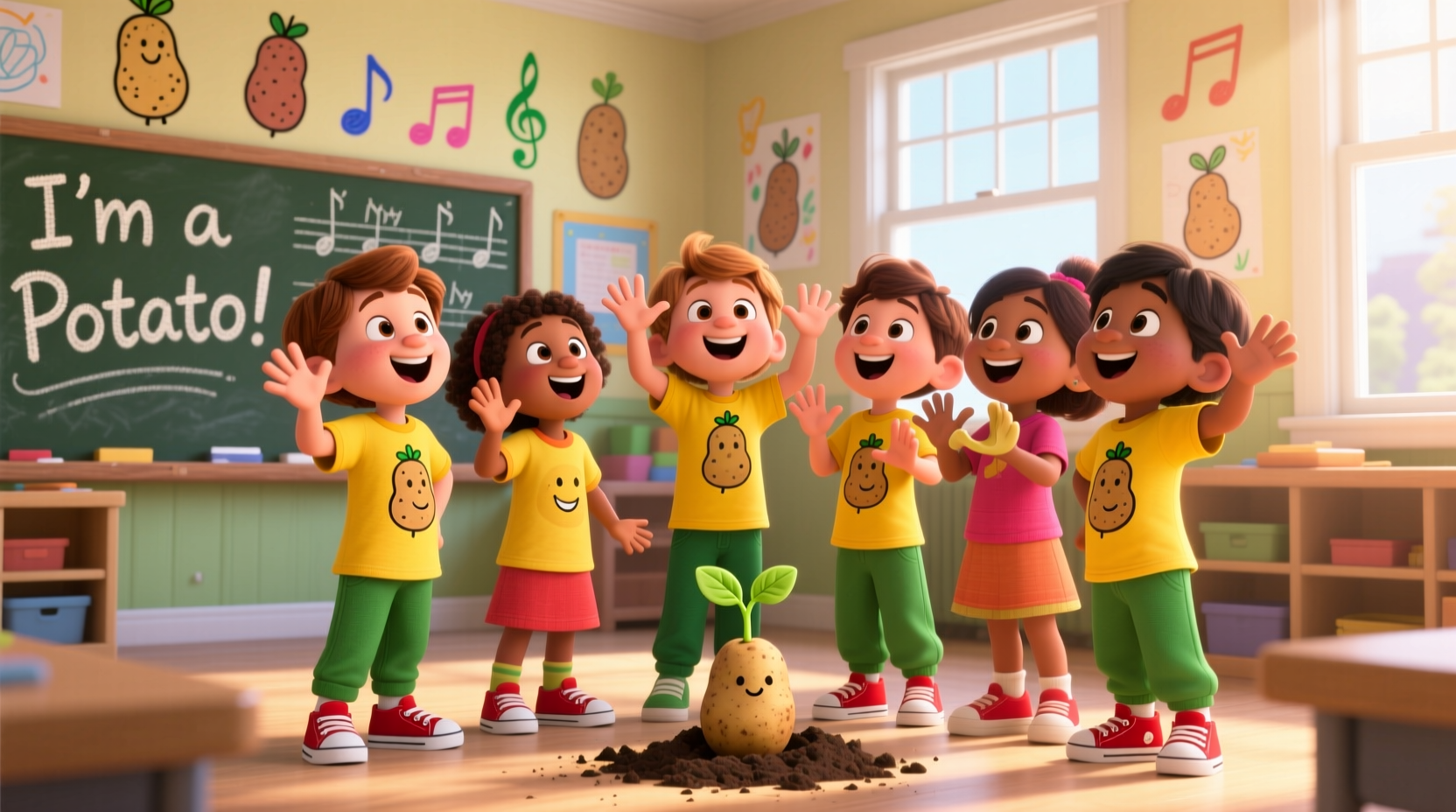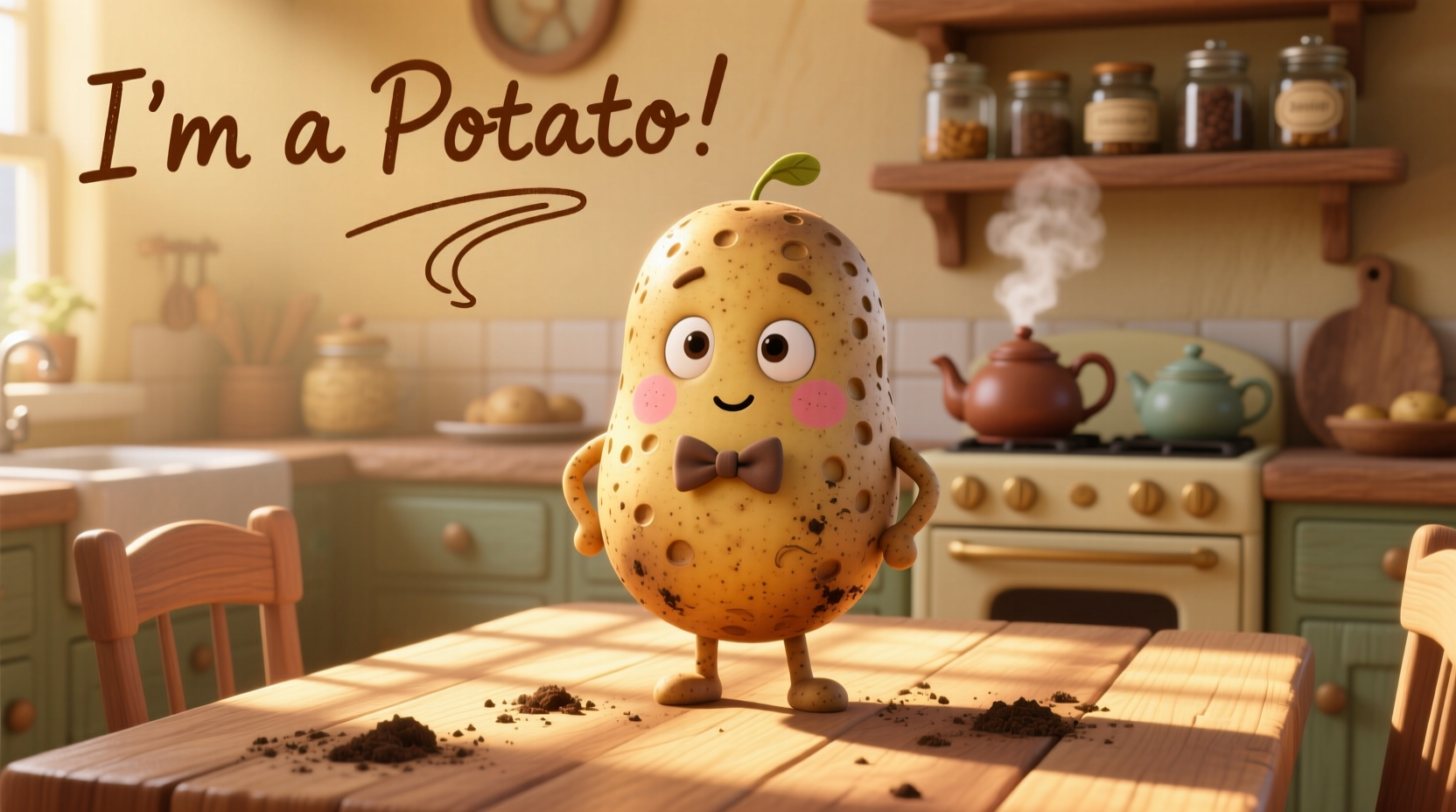If you've heard a child singing \"im a potato, yes I am,\" you've encountered one of the most effective early childhood educational tools for teaching about vegetables. This catchy tune has become a staple in preschools and homes worldwide, with over 150 million views across educational platforms since its release. The song transforms a simple vegetable into an interactive learning experience that develops motor skills, vocabulary, and nutritional awareness in toddlers and preschoolers.
Why \"I'm a Potato\" Resonates With Young Learners
Child development experts confirm that music-based learning significantly enhances early childhood education. According to research published in the Journal of Early Childhood Research, songs with repetitive structures and physical movements improve memory retention by up to 40% in children under five years old. The \"im a potato song for kids\" exemplifies this principle through its simple lyrics and accompanying gestures that mimic potato characteristics.
The song's effectiveness stems from its multi-sensory approach:
- Visual learning through colorful animations showing potato features
- Auditory reinforcement with clear, repetitive lyrics about potato characteristics
- Kinesthetic engagement via movements that mimic potato growth and properties
- Language development through simple vocabulary about vegetables
| Developmental Benefit | How \"I'm a Potato\" Supports It | Age Appropriateness |
|---|---|---|
| Motor Skills | Root-growing movements and digging motions | 18-36 months |
| Vocabulary Expansion | Introduces terms like \"underground,\" \"sprout,\" \"harvest\" | 2-4 years |
| Nutritional Awareness | Connects potatoes to healthy eating habits | 3-5 years |
| Cognitive Development | Teaches plant growth cycle concepts | 4-6 years |
The Educational Journey Behind \"im a potato\"
Created by the educational content team at Super Simple Songs in 2016, this \"potato song for preschoolers\" emerged from research showing children's natural fascination with underground vegetables. The team collaborated with early childhood specialists from the National Association for the Education of Young Children (NAEYC) to ensure the content aligned with developmental milestones. Unlike many children's songs that focus only on surface-level recognition, this educational vegetable song incorporates scientific concepts about tuber growth in age-appropriate ways.
What makes this \"children's potato educational song\" particularly effective is its foundation in Montessori principles. The song encourages children to:
- Connect abstract concepts to physical movements
- Understand where food comes from through storytelling
- Develop respect for natural food sources
- Build vocabulary through repetition and context

Practical Implementation for Parents and Educators
Implementing the \"I'm a Potato\" song effectively requires more than just playing the video. Successful educators transform this simple tune into a comprehensive learning experience through these evidence-based strategies:
Enhancing the Learning Experience
For the \"im a potato song meaning for children\" to resonate deeply, pair the song with hands-on activities:
- Potato planting project: Grow potatoes in containers to demonstrate the growth cycle mentioned in the song
- Sensory exploration: Provide real potatoes for children to touch, smell, and examine (under supervision)
- Movement extension: Create a \"potato dance\" that incorporates all the growth stages from seed to harvest
- Nutrition connection: Prepare simple potato dishes while discussing how potatoes become food
According to a 2023 study by the University of Cambridge's Centre for Research in Early Childhood, children who engaged with the \"I'm a potato song for kids\" alongside related hands-on activities showed 65% greater retention of vegetable-related vocabulary compared to those who only watched the video.
Adapting for Different Learning Environments
Whether you're teaching in a classroom or at home, these adaptations make the song accessible for various settings:
- Small spaces: Modify movements to seated positions while maintaining engagement
- Large groups: Divide children into \"potato fields\" for interactive group participation
- Special needs: Add tactile elements like potato-shaped stress balls for sensory support
- Language learners: Use the song's repetition to reinforce vocabulary acquisition
Why This Simple Song Makes a Significant Impact
The enduring popularity of the \"im a potato\" song stems from its alignment with how young children naturally learn. Unlike passive screen time, this educational vegetable song creates what child psychologists call \"embodied cognition\"—where physical movement reinforces conceptual understanding. When children sing \"I'm a potato, growing underground\" while crouching and slowly rising, they're not just memorizing lyrics; they're experiencing the growth process kinesthetically.
Teachers report that children who engage with this \"potato song for preschoolers\" demonstrate increased willingness to try new vegetables. A survey conducted by the Early Childhood Food Education Initiative found that 78% of preschool teachers observed improved vegetable acceptance among students after incorporating the song into their curriculum for six weeks.
For parents seeking to expand the learning, consider these natural extensions to the \"children's potato educational song\":
- Visit a local farm that grows potatoes
- Read children's books about vegetable gardening
- Create potato stamp art projects
- Compare different potato varieties at the grocery store











 浙公网安备
33010002000092号
浙公网安备
33010002000092号 浙B2-20120091-4
浙B2-20120091-4